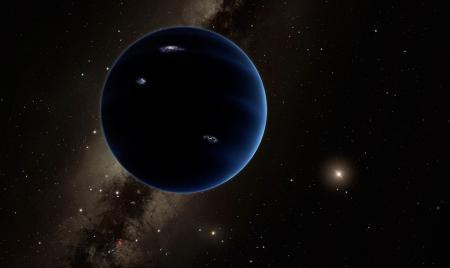Planet Nine is not alone: More planets predicted to be hiding at edge of Solar System
The Solar System could be harbouring far more planets than we currently know about, astronomers have said. After carrying out calculations relating to the hypothetical Planet Nine, the scientists said the presence of even more planets could better explain the unusual orbits of objects at the far reaches of the Solar System.
Evidence for the existence of Planet Nine was presented by Caltech scientists earlier this year. Scientists found six trans-Neptunian objects (ETNOs) with highly unusual orbital paths. However, they said these paths could be explained by the presence of a massive planet (about 10 times the mass of the Earth), the gravity of which was influencing the six objects.
Since the announcement, scientists across the globe have been running computer simulations and carrying out research in a bid to learn more about this potential planet.
Spanish astronomers Carlos and Raúl de la Fuente Marcos along with Sverre J. Aarseth from the University of Cambridge have now looked more closely at the orbits of the ETNOs. By trying to work out their evolution over time, the team said the orbits of these objects are not as stable as scientists first thought.

Published in the journal Monthly Notices Of The Royal Astronomical Society, researchers found Planet Nine could keep three of the ETNOs confined to a specific orbit for hundreds of millions of years. However, the three others would become highly unstable in just a dozen million years or so, "eventually triggering their ejection from the Solar System," they wrote.
Carlos de la Fuente Marcos said: "With the orbit indicated by the Caltech astronomers for Planet Nine, our calculations show that the six ETNOs, which they consider to be the Rosetta Stone in the solution to this mystery, would move in lengthy, unstable orbits.
"These objects would escape from the Solar System in less than 1.5 billion years and [three of them would] abandon it in less than 300 million years; what is more important, their orbits would become really unstable in just 10 million years − a really short amount of time in astronomical terms." To account for this problem, the authors say Planet Nine's proposed orbit needs to be slightly modified.

Further to this, however, the researchers say the presence of additional planets would help explain Planet Nine and its ETNOs stable orbits. "We believe that, in addition to a Planet Nine, there could also be a Planet 10 and even more," said Carlos de la Fuente Marcos.
The study concludes: "Is Planet Nine alone or are there more? Planet Nine, if it exists, moves in an elongated orbit that may be vulnerable to long-term secular perturbations resulting from the Galactic tide or discrete events like close encounters with passing stars.
"In this context, a lone Planet Nine may not be able to survive in its present orbit for the age of the Solar System, but a planet within a planetary group has better chances to be long-term stable. Therefore, if Planet Nine exists, it is probably not alone."
© Copyright IBTimes 2025. All rights reserved.






















